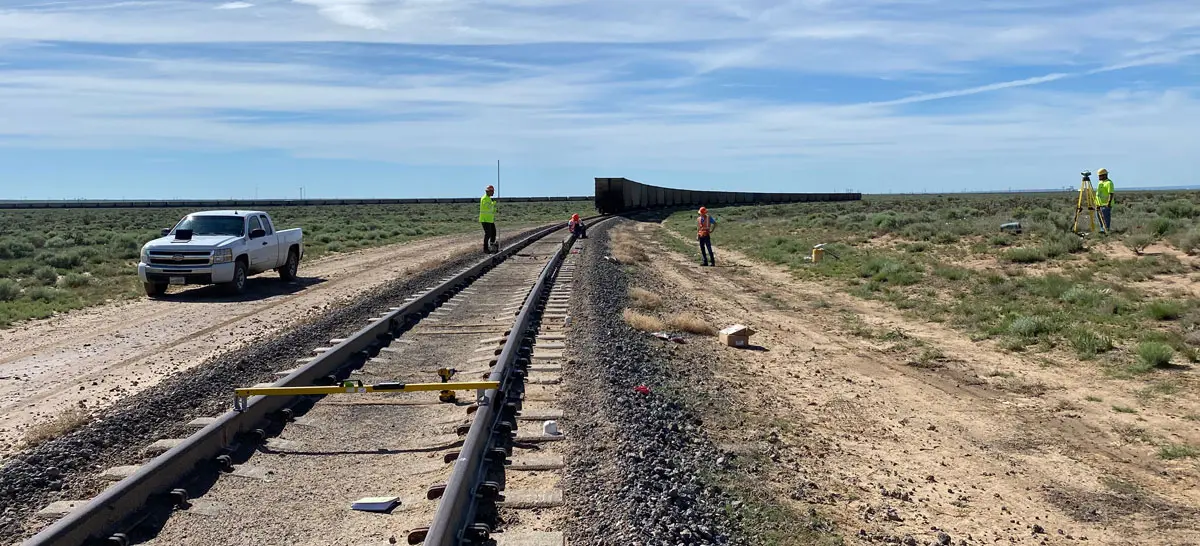Independent testing advances Senceive remote monitoring for track geometry

How do you create a track geometry defect for testing without interrupting service or causing a safety issue? Senceive spent time with MxV Rail to do just that.
The Issue:
Across the globe, wireless remote condition monitoring systems are growing in adoption. For many remote areas, and critical infrastructure investments, the technology makes good sense as an alternative or complement to traditional systems.
Senceive develops new technologies using sensors and software to take an always-on approach to monitoring the railways. As part of the company’s process for ongoing reliability and standard practice testing, Dan Miller from Senceive set out to conduct track geometry tests in U.S. conditions under a broad range of circumstances and track environments.
“We needed to mimic the type of movement railroad tracks experience during changes in track geometry. We wanted to know about wood and concrete placements, and we wanted to compare the data to traditional survey elevation monitoring with confidence,” said Miller. “MxV Rail was an ideal partner given the breadth and experience within their team, from lifelong railroaders to engineering PhDs, plus the decades of expertise built up from testing with the FAST train.”

Senceive sensors were put to the test with MxV Rail in Pueblo, CO
The Solution:
Although track changes typically happen in a downward direction, MxV Rail was able to mirror the downward condition for testing by engineering the track to lift upwards.
MxV Rail formed a five-person team for the tests that included members of its instrumentation and track divisions. With Miller on-site the team manipulated a series of jacks set intermittently along a section of rail track, with varying tie and fastener types, to induce changes in cross level and compare measurement methods.

Senceive and MxV Rail implement track lifts and cross level tilts for the custom test
The lifts were performed in six intervals, incrementally working toward 2-2/3 inches of cross level change at the test centerline. Before and after each interval, top of rail measurements were taken by gauge bar and the survey team, and Senceive sensor nodes were installed to take measurements continuously every 1-minute.

Multi-mode measures enhance safety testing and rail monitoring reliability
The data showed correlation with traditional methods and the sensors withstood normal track operations.

Interval 6 with each measurement method overlaid together
“With some creativity, we were able to run the tests, collect data for comparing three measurement methods, and complete the field work within a week,” said Stephen Wilk, PhD, principal investigator with MxV Rail Engineering Services. “Overall, it was an important and independent test of the technology. We provided a range of track conditions to test existing and new methods being developed by Senceive. Senceive will be able to continue using the data for its research and product development.”
Moving Forward:
As remote condition monitoring technology becomes increasingly cost-effective, and the data continues to make progress in reliability, the global rail community will benefit. Specifically, this technology is promising for smarter predictive maintenance, reducing carbon footprint with less travel via roadway and hi-rail vehicles, and reducing boots on ballast while increasing safety.
Senceive contributed to the industry’s foundation of knowledge with an AREMA paper and presentation of the tests. MxV Rail is working now on future FAST train experiments, and the team is ready to host partners and clients for track geometry testing at its new campus in Pueblo, CO.

